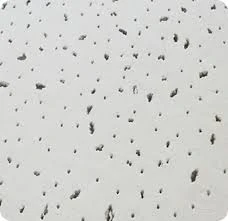- Afrikaans
- Albanian
- Amharic
- Arabic
- Armenian
- Azerbaijani
- Basque
- Belarusian
- Bengali
- Bosnian
- Bulgarian
- Catalan
- Cebuano
- Corsican
- Croatian
- Czech
- Danish
- Dutch
- English
- Esperanto
- Estonian
- French
- German
- Greek
- Hindi
- Indonesian
- irish
- Italian
- Japanese
- Korean
- Lao
- Malay
- Myanmar
- Norwegian
- Norwegian
- Polish
- Portuguese
- Romanian
- Russian
- Serbian
- Spanish
- Swedish
- Thai
- Turkish
- Ukrainian
- Uzbek
- Vietnamese
Nov . 06, 2024 01:56 Back to list
Comparison of Mineral Fibre Ceiling Panels and Gypsum Board for Interior Design Choices
Comparing Mineral Fibre Board Ceilings and Gypsum Board
When it comes to interior building materials, particularly for ceilings, two popular options stand out mineral fibre board and gypsum board. Each of these materials has its unique properties, advantages, and limitations which make them suitable for various applications in both residential and commercial buildings. Understanding the differences and similarities between these two types of boards can greatly aid in making the right choice for a specific project.
Composition and Properties
Mineral fibre boards, also known as acoustic ceiling tiles, are made from inorganic materials and are often composed of mineral wool or a combination of different mineral-based fibres. This composition makes them lightweight, sound-absorbent, and relatively resistant to moisture. One of the standout characteristics of mineral fibre boards is their ability to enhance acoustics within a space, making them a popular choice for offices, schools, and other environments that benefit from reduced noise levels.
On the other hand, gypsum boards, commonly referred to as drywall, are made from a gypsum core sandwiched between two sheets of heavy paper. This composition gives gypsum boards excellent fire resistance and structural integrity. They are widely used in wall and ceiling applications due to their smooth finish, ease of installation, and versatility in design. Gypsum boards can be finished with various paint and texture options, allowing for aesthetic customization.
Installation and Cost
When it comes to installation, mineral fibre board ceilings are typically suspended from a grid system, making them easier to install and ideal for spaces where access to overhead systems is necessary, such as HVAC or electrical wiring. They can also be easily removed and replaced, providing maintenance advantages. On the downside, the grid system required for mineral fibre boards can add to the overall cost and complexity of the installation.
Gypsum board installation usually involves fastening the boards to joists or furring strips, followed by taping and mudding the seams to create a seamless finish. While this method can take more time and skill, the end result often provides a more polished and professional appearance. Gypsum boards tend to be less expensive than mineral fibre boards, but the overall cost may increase due to the need for finishing materials and labor.
mineral fibre board ceiling vs gypsum board

Performance and Durability
Performance-wise, mineral fibre boards excel in sound absorption, which can significantly enhance the acoustic quality of a room. They are also resistant to moisture and mold, making them suitable for areas like kitchens and bathrooms. However, they can be prone to sagging and may require replacement if damaged.
Gypsum boards, known for their fire-resistant properties, can help improve the safety of a building during a fire incident. They are not as effective at sound absorption as mineral fibre boards, but certain types of gypsum boards are designed specifically for enhanced acoustics. Gypsum boards are generally sturdier than mineral fibre boards and can withstand impact better, making them a more durable long-term solution.
Environmental Impact
Both mineral fibre boards and gypsum boards have varying degrees of environmental impact, primarily in terms of their life cycle and manufacturing processes. Many manufacturers of mineral fibre boards strive for sustainable sourcing and production methods, while some types of gypsum boards are formulated using recycled materials. It is always essential to check for certifications such as LEED or other green building ratings when selecting materials for environmentally sensitive projects.
Conclusion
Choosing between mineral fibre board ceilings and gypsum boards ultimately depends on the specific needs of your project. If acoustic performance and ease of access are high priorities, mineral fibre boards may be the better choice. Conversely, if fire resistance, durability, and a finished look are more critical, gypsum boards could be the way to go. Each material serves its purpose effectively, and understanding their characteristics can help you make an informed decision that aligns with your design goals and functional requirements.
-
Mineral Fiber Ceiling Tiles Embossed Surface PatternNewsAug.05,2025
-
Mineral Fiber Board Xingyuan Vision for Better SpacesNewsAug.05,2025
-
Drop Down Ceiling Tile Office Use FitNewsAug.05,2025
-
PVC Gypsum Ceiling White Base ColorNewsAug.05,2025
-
Access Panel on Ceiling Xingyuan Integrity EthicNewsAug.05,2025
-
Ceiling Trap Doors Fire Resistant DesignNewsAug.05,2025







